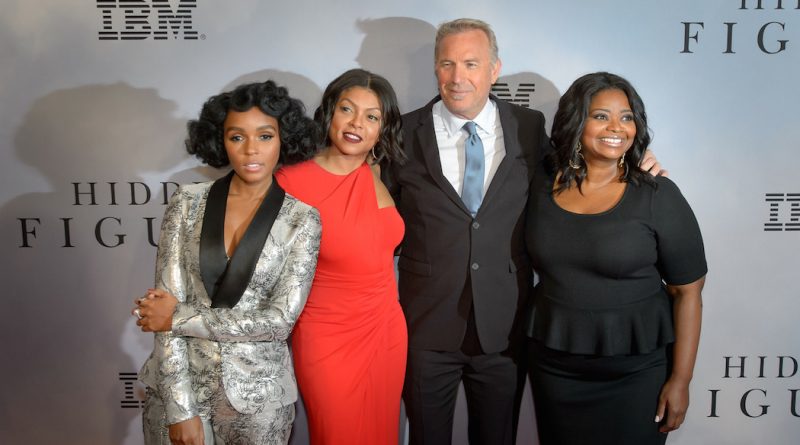“Hidden Figures” takes the traditional biopic to new heights
By: Brett Slaughenhaupt – Staff Writer
“Hidden Figures” knows exactly what type of movie it is, which isn’t to say that it’s perfect by any means. It is very much a sanitised vision of the ’60s, paramount with an oversimplification of racism and sexism (I mean, it’s rated PG). But that’s all OK. Those negatives work to the film’s advantage as we keep our focus held on the leads’ accomplishments in times of complete adversity.
In knowing what type of movie it is, “Hidden Figures” also knows who it was made for, which is especially important as young girls and boys need an introduction to smart, strong role models. It is an entertaining and inspirational journey, and the perfect example of how great acting can elevate a film to new heights.
The film follows Katherine Johnson, Dorothy Vaughan, and Mary Jackson, in “the story of a team of African-American women mathematicians who served a vital role in NASA during the early years of the US space program” (IMDb).
Directed with a steady, if nonexistent, hand by Theodore Melfi (“St. Vincent”), who also co-wrote the film with Allison Schroeder, the camera’s restraint from the usual biopic-indulgences services the material well enough. Honestly, all he has to do is keep it pointed in the direction of the leading ladies to be successful— interestingly, the exact same thing he had to do with “St. Vincent.”
The film’s real power comes from its leads: Taraji P. Henson: serving up all kinds of #BlackGirlMagic, to use a phrase coined by CaShawn Thompson, with her powerful intelligence and pointed glasses, Octavia Spencer: nominated for Supporting Actress in this role, and Janelle Monáe: coming off an absolute killer first year in film, with “Moonlight” and now this. These women hold our attention through their charismatic, nuanced portrayals that fully inhabit their characters.
Their struggles, having to run .5 miles to the bathroom every day, not being given the promotion one very much deserves, not even being able to get a promotion because of segregated resources and racist qualifications, become our own. Where they could have been played for broad triumphs, they became intimate adversities that ultimately provided insight into the world these women had to survive, and attempt to thrive.
It just goes to show us that even when faced with the most astronomical odds – discrimination trying to tear them down at every turn – these women, these black women, are strong as hell and are not to be underestimated. And they are portrayed as such. Seeing as our country was built on the backs of black slaves and other minorities, I guess it makes sense that the space program as we know it today is only possible because of them.
However, the film is not all-encompassed by struggle. We are given a look into their lives outside of NASA where they are free to be happy and sad and romantic and so much more. These moments allow the three actresses to strip away their professional facades and just live. Some struggles are easier to overcome in the film than what probably actually happened, but it allows for the film to keep its momentum and serves its characters. Because as much as this film is about putting the first American man in space, it is much more about the lives of three willful Black American women who push forward.
Katherine Johnson, Dorothy Vaughan, and Mary Jackson are the types of subjects that filmmakers should be jumping to cover. It would be a divergence from the usual fare that clogs our theaters, which would provide fresh material. Their presence is intrinsic to our nation’s history and allows for an interesting new perspective that isn’t often captured to be shown on screen. Three black women breaking down racial and gender barriers at NASA to help the USA’s first man into space? Unheard of. I mean that literally, the majority of America had never heard of these women before this film and that is a shame.
It’s nice to see them finally celebrated and awarded on the big screen. After all, Black History is the USA’s History.
To learn more about the stories of these three women, read “‘Hidden Figures’ No More: Meet The Black Women Who Helped Send America To Space” (NPR).
Come Sunday, Feb. 26, watch as “Hidden Figures” competes for three Oscars — Best Picture, Best Actress in a Supporting Role (Octavia Spencer), and Best Adapted Screenplay— at the 89th Academy Awards!
Photo is Courtesy of commons.wikimedia.org

